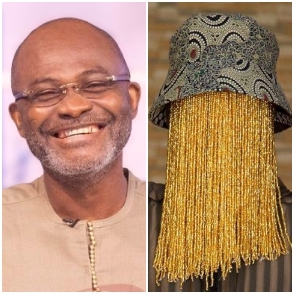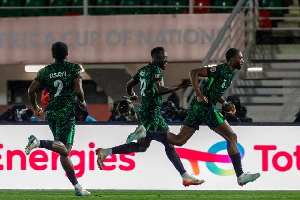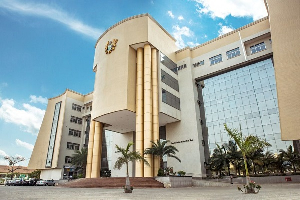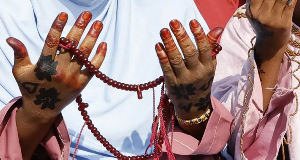I have had the privilege of reading the 65-page written decision of the defamation case of Anas Aremeyaw Anas versus Kennedy Agyepong, Civil Suit Number GT/892/2018 dated March 15, 2023. Though I am not a qualified lawyer some aspects of the written judgement had cause to give me concerns for a number of reasons such as maters of law, its interpretation and application, double standards and inconsistency.
Moreover, the judgement raised more questions than it answered and made me conclude that there are matters arising from the judgement that cannot be left unattended to. This article is a brief analysis of the judgement and the matters arising therefrom.
First, let me point out that I read the judgement with a strong belief in the maxim of equity doctrine, which is, “he who seeks equity must come with clean hands”. This doctrine requires the court to deny equitable relief to a party who has violated good faith regarding the subject of the claim.
However, I was also mindful of the limitation of the doctrine, which is
that the general or total conduct of the plaintiff is not to be considered. In other words, equity does not demand that its suitors shall have led blameless lives as Justice Brandies (JSC) stated in Loughran v Loughran, 292 US 216 (1934). This is important because I am fully aware that the modus operandi of Anas have been contentious in Ghana.
Second, it came to me from the beginning that the judge heavily relied on the principle of “Ex turpi causa non oritur action”, a legal principle in English law, which says that a party cannot benefit form its own wrongdoing. Whilst I appreciate why the judge relied on this principle instead of the equity doctrine, the judge run the risk of miscarriage of justice because it
creates the impression that the plaintiff was already guilty of wrongdoing prior to the case being heard.
This is not only an impression but there is strong belief among some of the
elites in Ghana, particularly the political class and those who have been adversely affected by the work of Anas that his modus operandi are illegally without considering the question of whether there is public interest in such modus operandi. I will return to this matter and provide evidence why I am of this view.
Third, after reading the judgement, I watched one of the video exhibits provided by the defendant to the court (as Exhibit KOA1) on Ghanaweb (Who watches the watchman) and that also gave me concern because it is appears to be two or more recordings that have been edited and put together as one for the court. Again, the judge relied heavily on this evidence in most of his decisions.
The problem is that it was not the original recording and therefore the court run the risk of relying on secondary evidence that has been put together
by one party (the defendant) to suit his defence. The failure of the judge to demand the original unedited copy of the recordings as the customary practice in court cases, suggests some form of bias in favour of the defendant.
In fact, after watching the video, I asked myself, did the plaintiff’s team demand the original unedited recording to be provided in court, and if not, why?
As I watched Newsfile on Saturday March 18, 2023, I became aware that the plaintiff’s legal team applied to the court to provide the original unedited recording but the application was rejected by the judge. If this is correct, then judgement based on secondary and edited material by the defendant is wholly untenable and unsafe, especially after the judge had refused the plaintiff’s application.
I also understand from Saturday’s Newsfile that when the plaintiff’s videos are used in court to prosecute those caught to have committed crimes, the
original unedited recordings are used. Therefore, why not in this case? Is there one rule for others and another for the plaintiff or defendant? Is that consistent with customary practice?
Finally, I received a WhatsApp post on the same Saturday, which claimed to have been authored by Manasseh Azure regarding this case. I therefore did a fact check on the post by visiting the Facebook page of the author and I was scandalised by what was there.
According to Manasseh, the original judge for the case in 2018 was Justice Daniel Mensah (the Dormahene) but was transferred to Tema in 2020. An Appeal Court Judge, Justice Eric Baah was appointed by the Chief Justice as the interim judge pending the appointment of a substantive judge. In June 2020 Justice Gifty Agyei-Addo was appointed as substantive judge.
This is the judge who overruled the General Legal Council’s decision to suspend
Francis Xavier Sosu from practising as a lawyer.
On 19 October 2021, Kennedy Agyepong’s solicitors wrote to the Chief Justice (copy of the letter is provided) requesting that Justice Eric Baah should be reappointed the substantial judge because he had started hearing the case, taken some evidence and observed the plaintiff’s demeanour. That, the change in judges will delay the case. These are reasonable and fair. I have no problems with the reasons stated.
However, what is not only shocking but also bizarre in judicial practice is that without reference to or notifying the plaintiff’s solicitors, the Chief Justice wrote on October 27, 2021 to Justice Eric Baah to appoint him as substantive judge to continue the case. Again, Manasseh provided a copy of the Chief Justice’s letter. Unbelievable! Both the plaintiff and the defendant were not copied into this letter.
Therefore, the plaintiff and his legal team only found out in court on December 1, 2020 that Justice Eric Baah and not Justice Gifty Agyei- Addo was sitting on the case. In my experience in the administration of justice, one party to a case cannot apply to the the head of judiciary for a named judge to hear the case without the notice of the other party or that party being given the option to agree or contest the application. In court disputes, even if one party writes to the court or judge, it is a requirement that the other party must be informed by sending a copy of the letter or correspondence to his or her legal representative.
If that is not done, the court has a duty to inform the other party and also send a copy of the correspondence to them. This is because transparency is critical in the administration of justice. In addition to that, it is legal practice that there must be no surprises in court.
Moreover, justice must not only be done but must be seen to be done. The way the
reappointment of the trial judge was handled, creates the impression that, it was the defendant that influenced or decided which judge should hear the case and that is worrying.
The plaintiff went to court in a civil suit and at the end of the case, the judge determined that he was a criminal, practicing investigative terrorism, etc. There are problems with such decision in law. A civil suit of defamation is determined on the balance of probability, whilst criminal cases are determined by beyond reasonable doubt. The question is, which one did the judge rely on (on the balance of probability or beyond reasonable doubt)?
From my reading of the written judgement, the judge relied on both at the same time but separately and not severally. That is, beyond reasonable doubt for the plaintiff and balance of probability for the defendant. This creates three problems in law.
First, the case was a civil one and not a criminal case, therefore it is not possible to use both since the plaintiff was not charged with a criminal offence as well as not the defendant. The second is inconsistency and one rule for the plaintiff and another for the defendant. The third problem was in fact, identified by the judge himself in pages 41 and 42 in his judgement (though he did not follow it himself).
The judge said that in the two pages that, the plaintiff cannot approbate and reprobate at the same time, referring to exhibit KOA1 where the Anas admitted some sections of the video but disputed others in court. Here we are with the judge committing the same offence of approbation and reprobation by relying on both when it suits him. What sort of justice is that?
It is unacceptable in law because the same criteria or standards must be used for both the plaintiff and the defendant.
Again, the judge committed a second offence of approbation and reprobation in his written judgement. The matters for judgement were not in dispute because the defendant admitted that he said what had been attributed to him. Therefore, the onus was upon him to prove to the court that they were facts and fair comments as he claimed in his defence.
Strangely, the defendant claimed in court after admitting that all the accusations against him by the plaintiff were facts, that accusing the plaintiff of killing the late MP, Joseph Boake Danquah Adu was not fact but he said it out of anger because the plaintiff had accused him of killing Ahmed Suale.
Therefore, it was a kind of tict for tact. There is no evidence in the written judgement that the judge made any observation on this contradiction by the plaintiff of reprobation and approbation. Why? If the judge rejected the plaintiff's reprobation and approbation, why not that of the defendant? That is also unacceptable in law as it is unfair and could impugn the judgement.
I am aware that the judge did not have to address all the thirty (30) defamatory statements alleged to have been made by the defendant. However, because the defendant claimed them to be facts and fair comments in his defence as well as they were matters of crime in the view of the judge, the judge had no option but to have determined every single case on its own merit.
For example, the claims that the plaintiff is email and messages hacker, tax evader, custom duty evader, impersonate as a lawyer, etc, it was important the judge addressed them separately as well and severally. However, for such serious allegations to be judged only severally is indefensible in law and the administration of justice.
It is even more disturbing when the judge went out of his jurisdiction and proclaimed the plaintiff a criminal and practising investigative terrorism, mostly based on evidence or exhibit KOA1.
In the judgement, there was no mention of examples of emails and messages that the plaintiff had hacked or when, where and how the plaintiff impersonated himself as a lawyer, what specific taxes and custom duties he evaded, when, etc. All these leave this judgement on conjecture and not on law.
Now let me turn to the over reliance on evidence or exhibit KOA1. I have already indicated that this was two videos edited into one by the defendant and therefore unreliable and should not have been admitted by the court but rather the original unedited copy. There is some discussion of bribe paid and taken.
People are shown in the video, allegedly including Anas (the plaintiff), a state prosecutor and others with captions claiming this is that person or
this person. It was the case of the plaintiff that in some sections it was him talking but not in other sections, which the judge rejected that. I do not know Anas or his voice.
However, the judge accepted that it was Anas. I guess he saw the face of Anas in court and can identify him. He also heard his voice and could make his voice out from the video. Sadly, the judge did not confirm these in his written judgement that he saw Anas in court and therefore it was Anas who appeared on the video.
Again, there was a state prosecutor shown to be allegedly discussing bribe and how to make up evidence to fit the prosecution’s case in court to let some of the accused off. I also understand from the judgement that that state prosecutor has since retired.
The question is, since the plaintiff was disputing the contents of the video as being edited, why did the judge refused to allow the original unedited video in court? Finally, why did none of the parties bring the retired state prosecutor as a witness or the court order for her to appear as witness?
The judge stated in page 62 of the written judgement and I quote, “It should be
understood that as officers caught by plaintiff in his investigations have lost their jobs, an entrapped president may be compelled to resign out of shame or public pressure. That means, the plaintiff through his investigative antics can cause the removal of a president, and thereby upend the mandate given to him at the elections. That is not investigative journalism. It is investigative terrorism. It is exercise of indirect political power under the cloak of journalism”.
'Investigative terrorism' Really? Does the judge understand what is terrorism?
Terrorism is described as subversive political violence that occurs outside mainstream international armed conflict, which cannot also be easily or properly defined as part of guerrilla or civil war but characterised by the taking of innocent lives against an established political order.
The question is, has the modus operandi of the plaintiff caused any the loss of any life directly or indirectly? In fact, it is actually his own colleague, Ahmed Suale who had been mudded by those who disagreed with his modus operandi. In my view, the judge was out of order with his description of the modus operandi of the plaintiff.
This is a sign of an angry judge, who perhaps had already judged the case before hearing it. Is the judge claiming that if investigative journalism leads to wrongdoing by an elected leader, that leader should not resign? Was it not investigative journalism that brought down the presidency of the late Richard Nixon? Yes, there are differences of opinion on the modus operandi of the plaintiff.
However, the fact is that, if the person entrapped is not already a crook, corrupt or dishonest but an honest person with integrity, s/he will not fall for it. Again, if there is public interest for the use of this type of modus operandi then it is justified.
The judge also compared or mentioned the case of the judges’ scandal of taking bribe which was unearthed by the plaintiff for which some were dismissed. This is also problematic because it raises a question of conflict of interest by the judiciary. It is common knowledge that the judiciary is not happy with how some of their colleagues were treated as a result of the work of the plaintiff.
Again, for the judge to claim that they only took goats or yam is unacceptable because the plaintiff was not on trial for that case. Finally, those cases were
properly dealt with through the judicial administration process and therefore the judge was wrong to make comparison in this matter.
This is another indication that the judge was bias against the plaintiff.
Finally, if the judge is right in finding the plaintiff’s modus operandi and the alleged defamatory accusations as facts and criminal, what happens next? Why did the judge after strangely determining in a civil suit that the plaintiff had committed crimes, fail to order the arrest of the plaintiff for further investigations and future prosecution?
What happens to cases that have been tried and the accused judged guilty by the courts relying on the modus operandi of the plaintiff that are now judged to be criminal by this judge? Are such convictions safe? What about those in the video or exhibit KOA1 who were seen allegedly to have paid and received bribes?
Are such acts not criminal and therefore the need for them to be brought to justice and held accountable for the alleged criminal acts including the
retired state attorney and the former CID boss?
In conclusion, it is my case that this judgement has raised more questions than answers. It is not safe, it’s bias, inconsistent and unlawful and should be challenged through an appeal.
Opinions of Monday, 20 March 2023
Columnist: Kofi Ata















